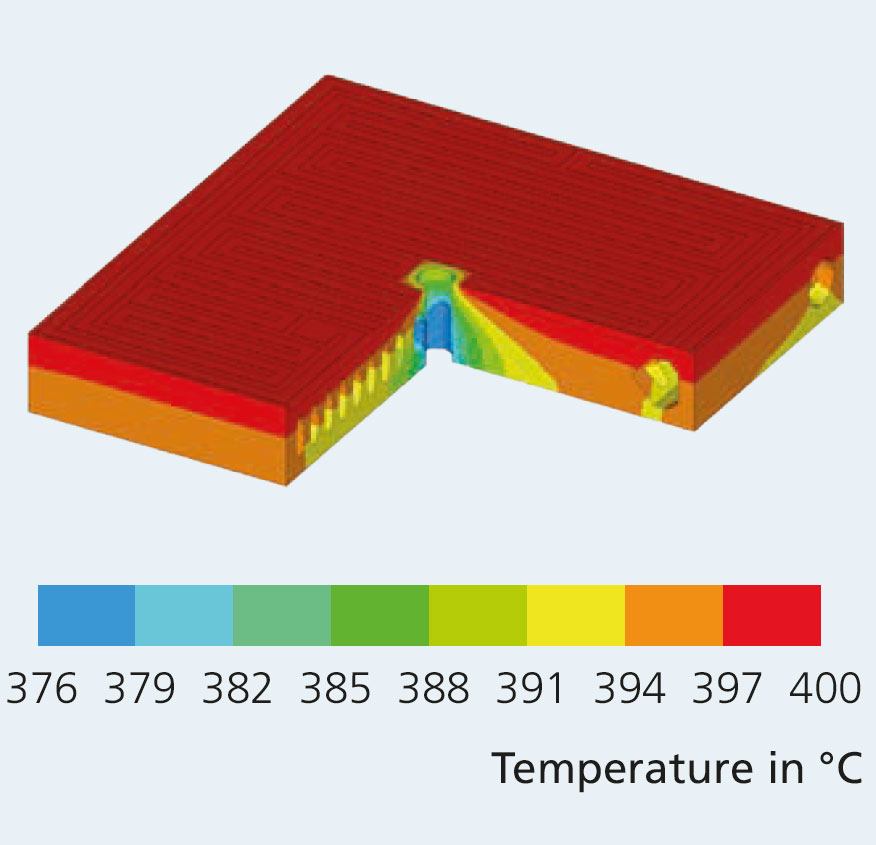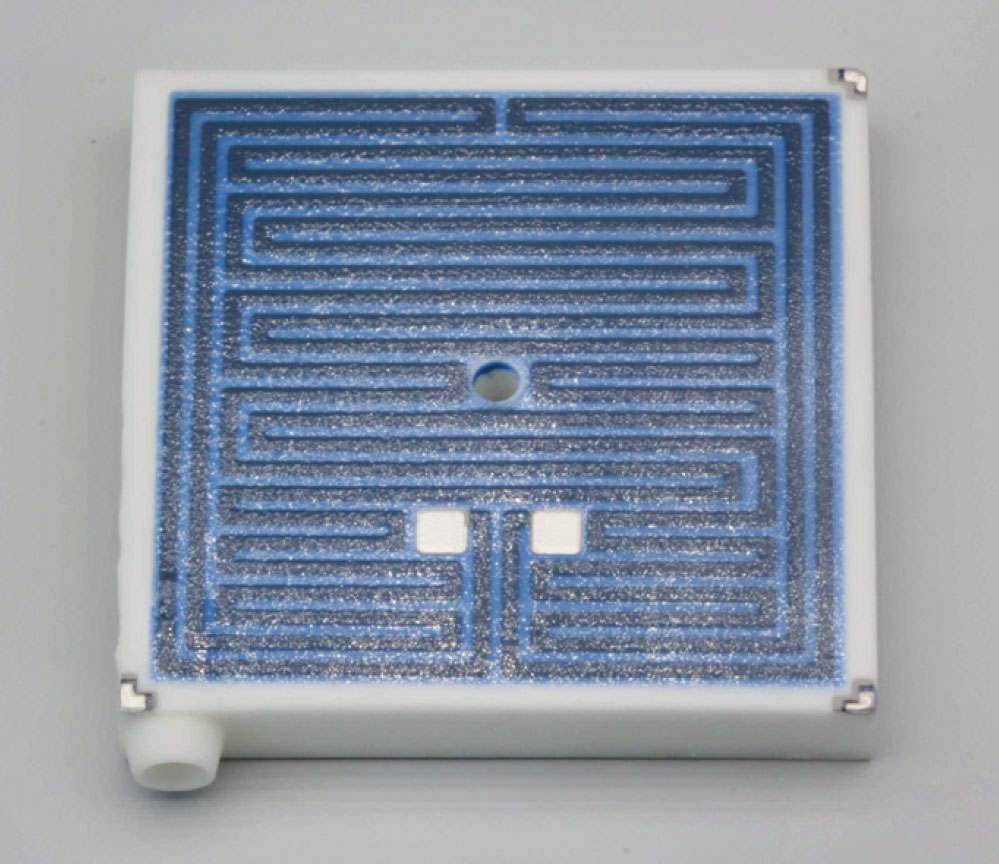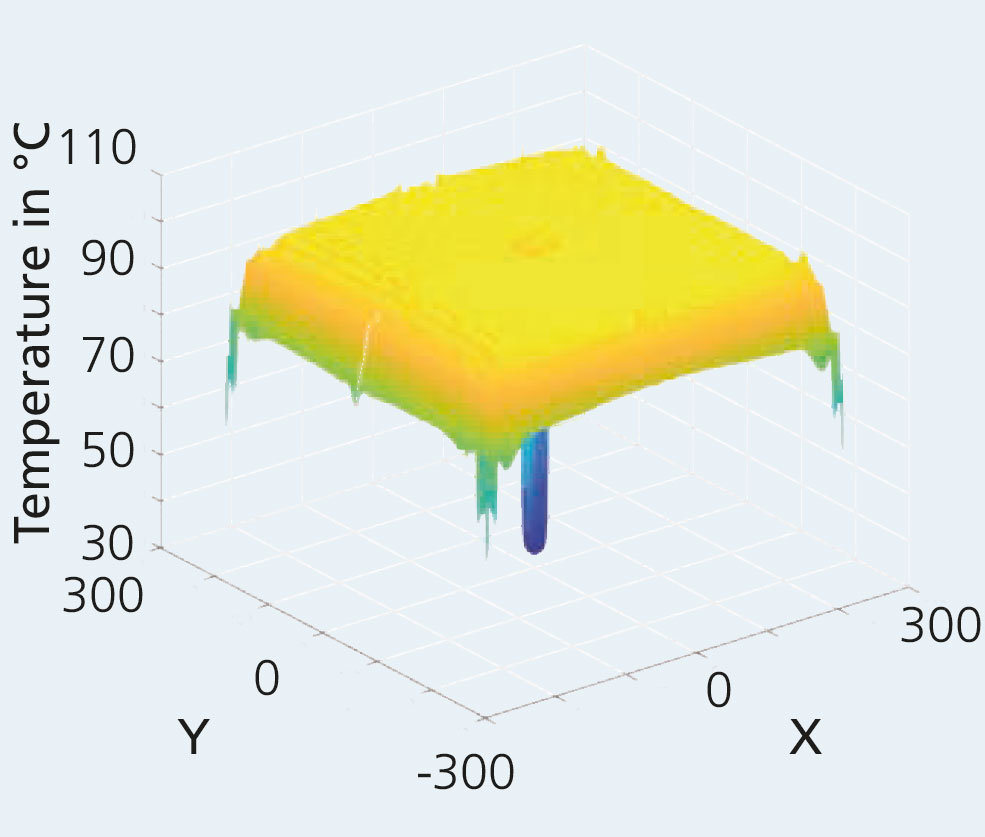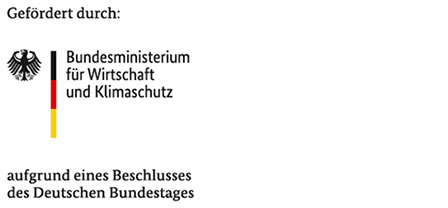
Highly dynamic ceramic matrix heaters for generating fast temperature fields
Current research




A large number of technical manufacturing processes are based on the precise temperature control of process goods or chemical reagents. Because of their technical properties, ceramic materials and technologies are suitable for implementing selected heater applications in the geometrically mesoscale range of a few millimeters. One example is a highly dynamic and actively cooled matrix heater for generating fast temperature cycles. Such heaters consist of individual pixels that are combined to form a matrix. Supported by a simulation-based design of these components, well-known technologies such as thick-film technology are symbiotically combined with modern additive manufacturing techniques for ceramic materials at Fraunhofer IKTS.
FEM-supported design
The base bodies were designed with the finiteelement method. The requirements of the specific temperature cycle profiles were used to identify optimal material combinations, the thermoelectric heater layout and the ideal setup of the internal cooling channels. The aim is to avoid mechanical fractures by reducing the residual mechanical stresses in the material composite between the conductive pads and ceramic structure. For this purpose, variable heater layouts as well as cooling channels in differing shapes, quantities and positions were evaluated with respect to homogeneous temperature fields and the mechanical stresses in the interfaces. The stresses were simulated along the production chain and under operating loads.
Additive manufacturing of ceramic base bodies
Ceramic materials can only be machined at great expense due to their typical high hardness and low ductility. Additive manufacturingprocesses are “game changers”, since complex geometries can be realized close to the final contour and functions, such as cooling channels, can be implemented even in small volumes. This results in larger geometric degrees of freedom and completely new fields of application, e.g. in medical engineering or for the Fourth Industrial Revolution. Fraunhofer IKTS uses various additive manufacturing processes for ceramics.
Functionalization
The optimized and additively manufactured ceramic components are functionalized using the well-known thick-film technologies. Electrical circuits, heating elements and sensors are printed in a structured manner and fired onto the ceramic basic structure.
Electrical contacting is achieved by means of advanced assembly and connection technology. Solutions up to temperatures of 350 °C have been successfully realized. High-temperature applications up to 600 °C are currently being tested. Temperature gradients of up to 70 K/s have been demonstrated successfully. The project “DynaCool” is funded by the German Federal Ministry for Economic Affairs and Climate Action (BWMK) (funding code: 16KN054345).
Supported by
